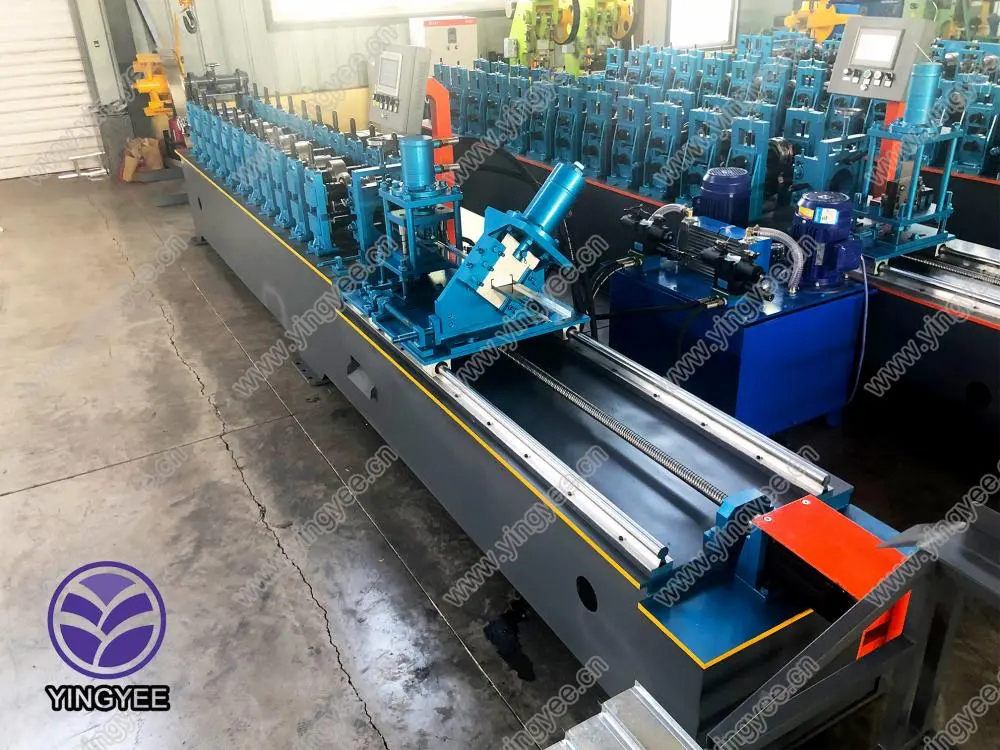
Understanding Strut Channel Roll Forming A Comprehensive Overview
Strut channel roll forming is a highly efficient method used in the manufacturing of strut channels, which are essential components in various construction and industrial applications. Strut channels, often referred to as strut framing systems, provide structural support for a wide array of mechanical systems, including HVAC units, plumbing, electrical conduits, and more. This article delves into the intricacies of strut channel roll forming, focusing on its processes, applications, and benefits.
The Roll Forming Process
Roll forming is a continuous bending operation in which a long strip of metal is passed through a series of rollers, each designed to progressively shape the metal into the desired profile. The process begins with a flat sheet of metal, typically steel or aluminum, which is fed into the roll forming machine. The machine’s rollers are precisely engineered to transform the flat metal into a strut channel profile, characterized by its U-shaped or C-shaped cross-section.
The roll forming process generally involves the following steps
1. Material Preparation The raw material, often supplied in coils, is cleaned and cut to the necessary widths. 2. Roll Set-Up The appropriate roller dies are attached to the roll forming machine based on the desired channel profile. 3. Feeding and Forming The flat metal is fed into the machine, where it passes through sequential roller stations that gradually shape it into the final strut channel form. 4. Cutting After the metal is formed, it is cut to length, usually through a flying cut-off system that ensures continuous production. 5. Finishing The channels may undergo additional processes such as welding, punching, or surface treatment, depending on the specific requirements.
Applications of Strut Channels

Strut channels are widely used across various industries due to their versatility and strength. Key applications include
- HVAC Systems Strut channels are extensively utilized to support heating, ventilation, and air conditioning systems in commercial and industrial buildings. - Electrical Systems They provide a robust framework for mounting electrical conduits, ensuring safety and compliance with building codes. - Plumbing Support Strut channels facilitate the installation and support of plumbing systems, making maintenance and adjustments easier. - Racking Systems In warehouses and storage facilities, strut channels serve as critical components for racking systems, offering structural integrity and flexibility in design.
Benefits of Strut Channel Roll Forming
The roll forming process of strut channels offers several advantages
1. Precision Roll forming allows for high levels of precision in creating uniform profiles, which translates into better fitting and reduced installation time. 2. Cost-Effectiveness The continuous nature of roll forming makes it a highly efficient and cost-effective manufacturing method, especially for high-volume production. 3. Material Efficiency The process generates minimal waste since it uses continuous strips of metal. 4. Strength and Durability Strut channels produced through this process exhibit excellent strength and durability, making them suitable for various load-bearing applications. 5. Customization Manufacturers can easily adjust the roller dies to produce different sizes and shapes, accommodating specific project requirements.
Conclusion
Strut channel roll forming represents a cornerstone in the modern construction and manufacturing landscape. Its ability to produce high-quality, durable strut channels with efficiency and precision has made it an essential process for a variety of industries. As the demand for versatile and reliable structural support systems continues to grow, the roll forming industry will likely evolve, incorporating new technologies and materials to enhance production capabilities and meet the ever-changing needs of the market. Understanding this process helps stakeholders make informed decisions in sourcing and utilizing strut channels effectively, ensuring that their projects adhere to both functional and structural standards.